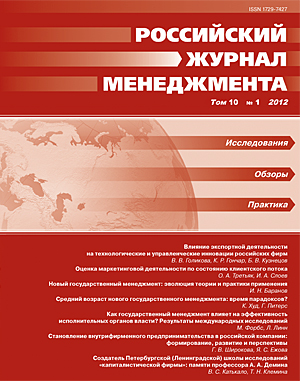Client’s Flow Based Evaluation of Marketing Activities
Abstract
The paper integrates the concepts of network relationships, value chain management and customer lifetime value to construct the system of indicators that allow firms to evaluate long term and short term results of the marketing activity along the value chain. Based on this theoretical
basis we developed the conceptual model of client’s flow and propose sequence of actions that can translate these concepts into measures and indicators that allow firms to understand their role in creating sustainable value. Participative inquiry and case study methods were used for validation and clarification of the model. Using this model we conduct comparative analyses of acquisition and retention strategies of the same multinational firm in different markets — Europe and Russia. We found the results were crucial to justify the new directions of future long term marketing activities. Beside that we tested the system of measures and indicators in different industry and got the positive reaction from the practitioners and readiness to implement monitoring system proposed to serve this model.
Keywords:
value chain, long-term and short-term effects of marketing, client flow, metrics and indicators
Downloads
References
The List of References in Cyrillic Transliterated into Latin Alphabet
Downloads
Published
How to Cite
Issue
Section
License
Articles of the Russian Management Journal are open access distributed under the terms of the License Agreement with Saint Petersburg State University, which permits to the authors unrestricted distribution and self-archiving free of charge.





